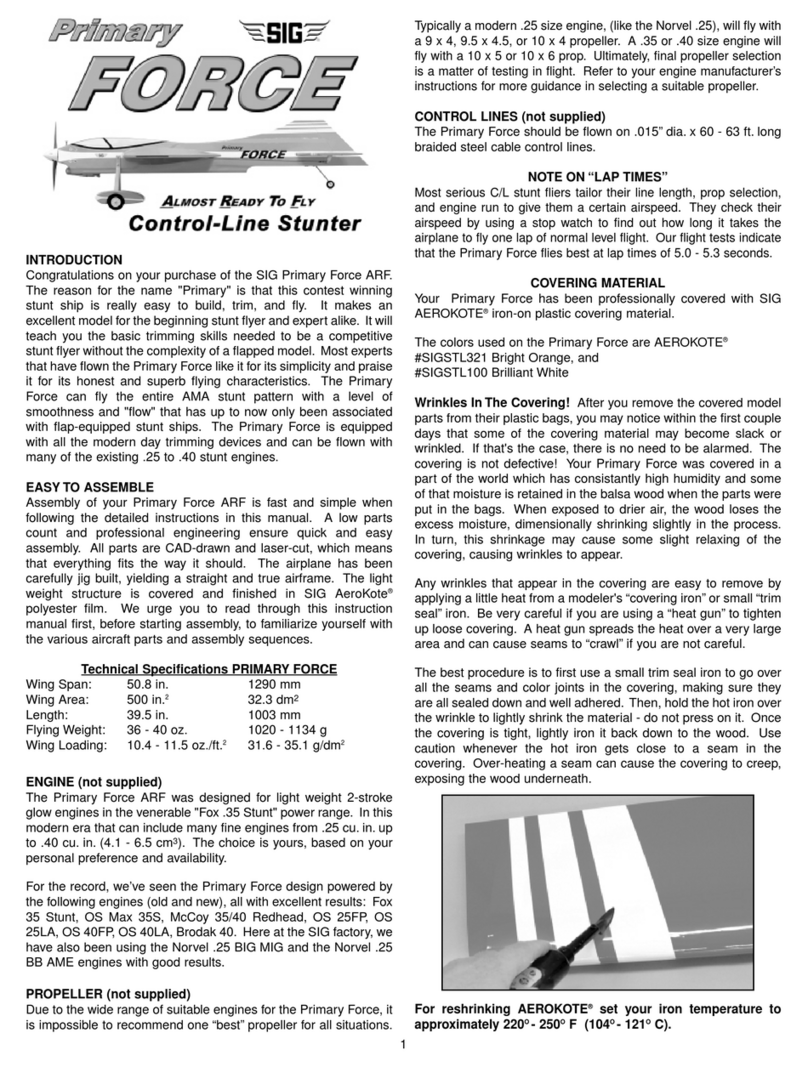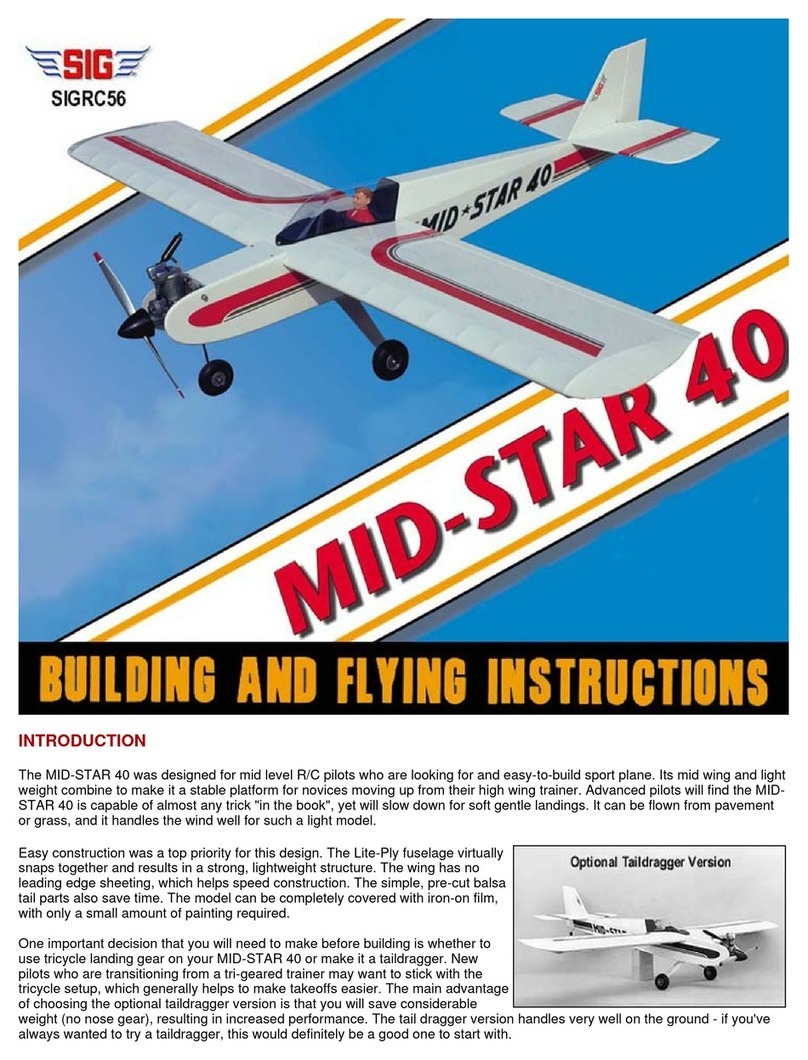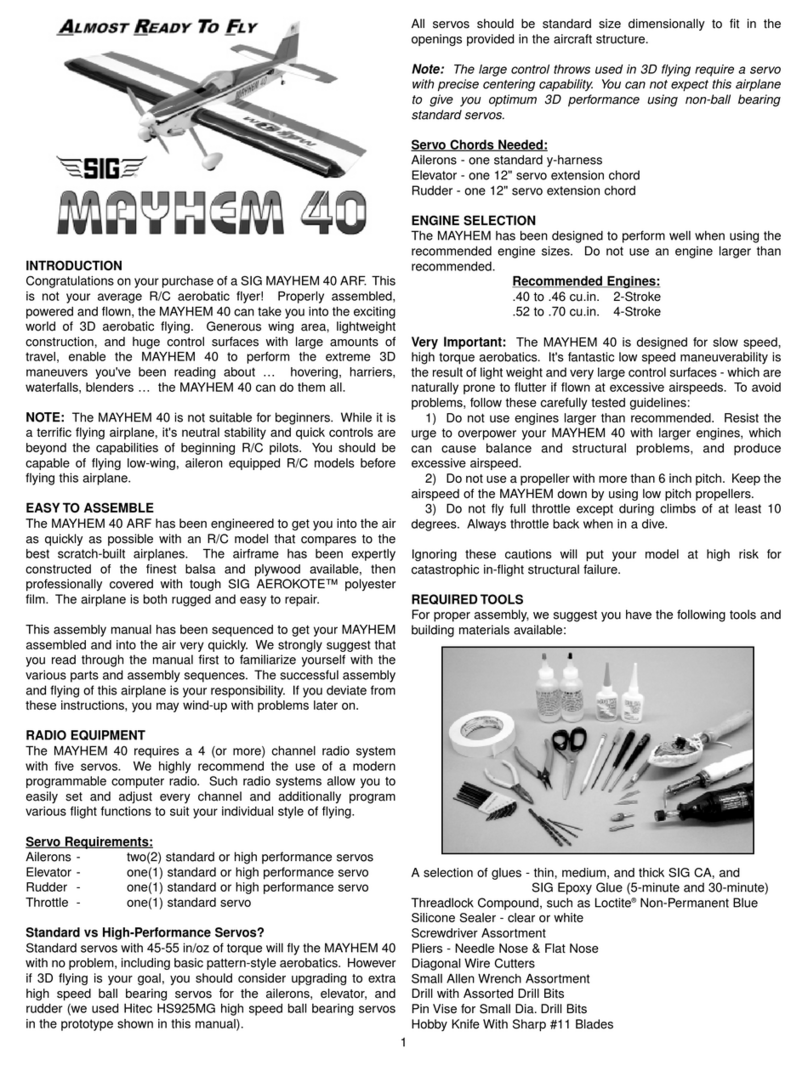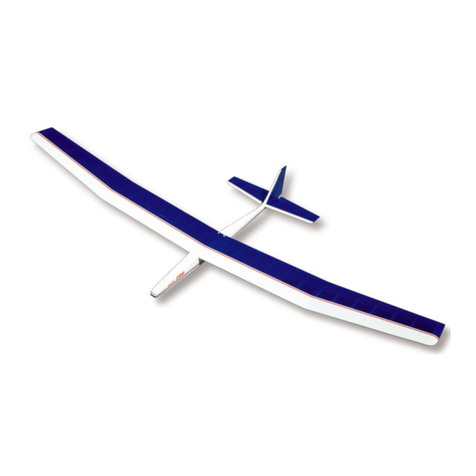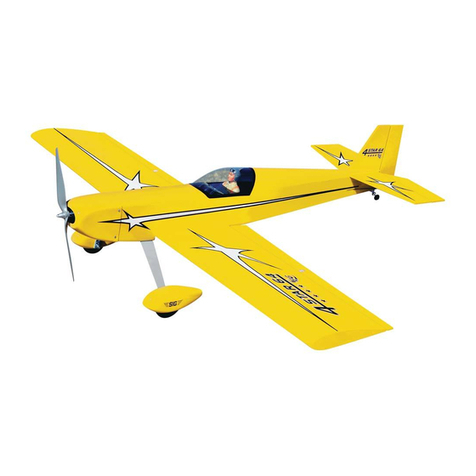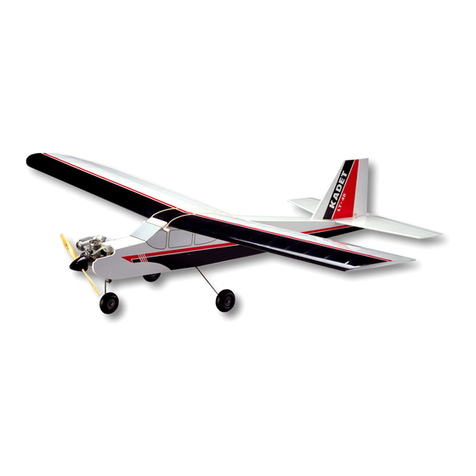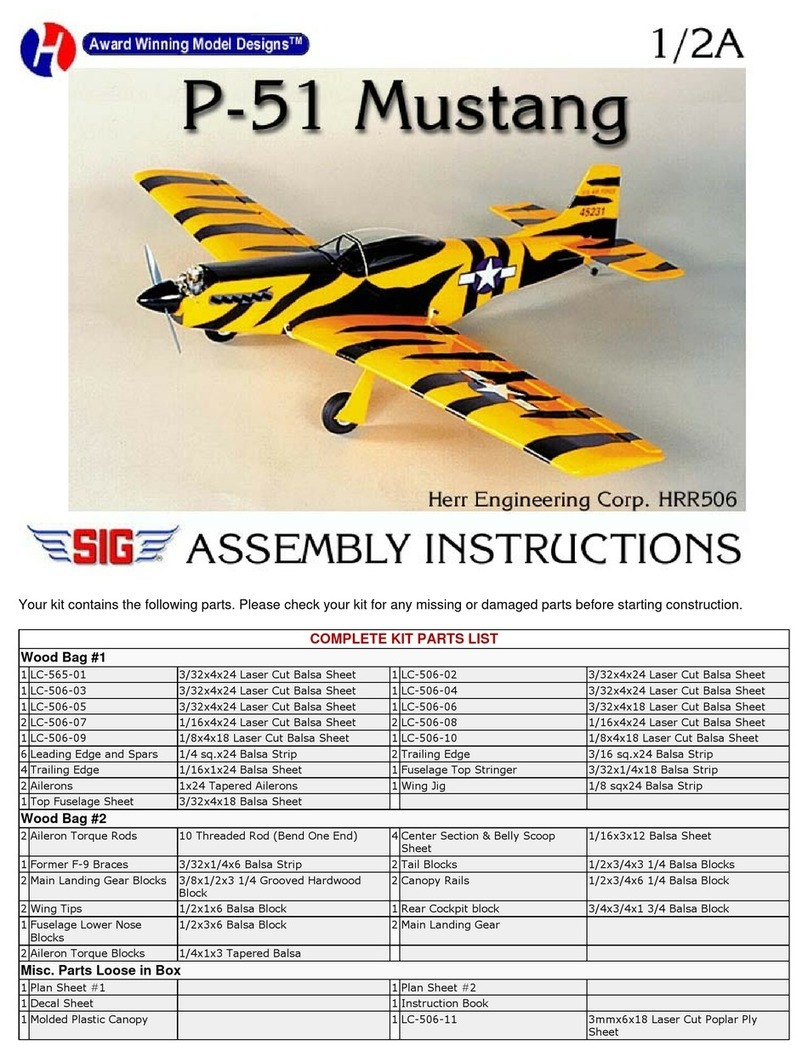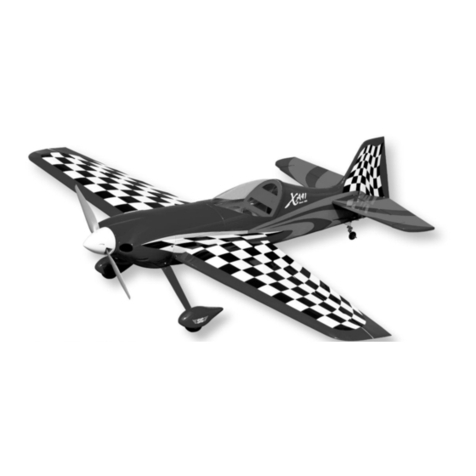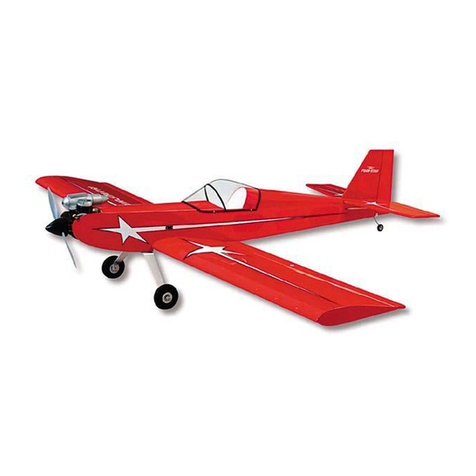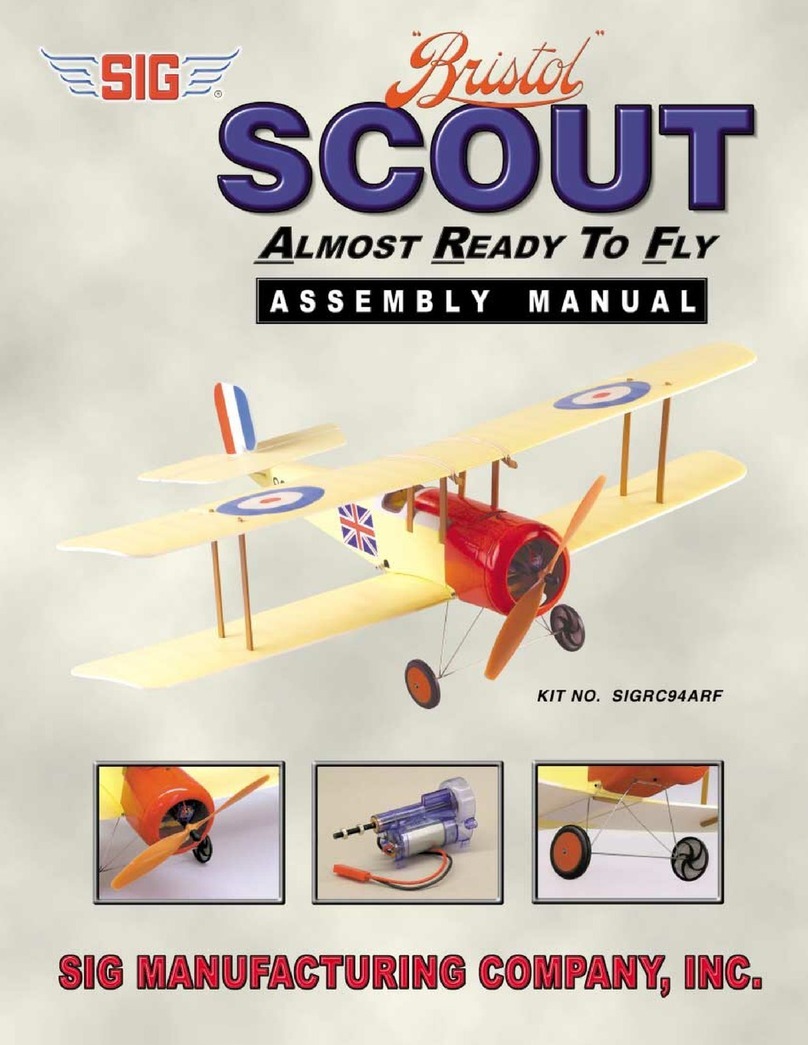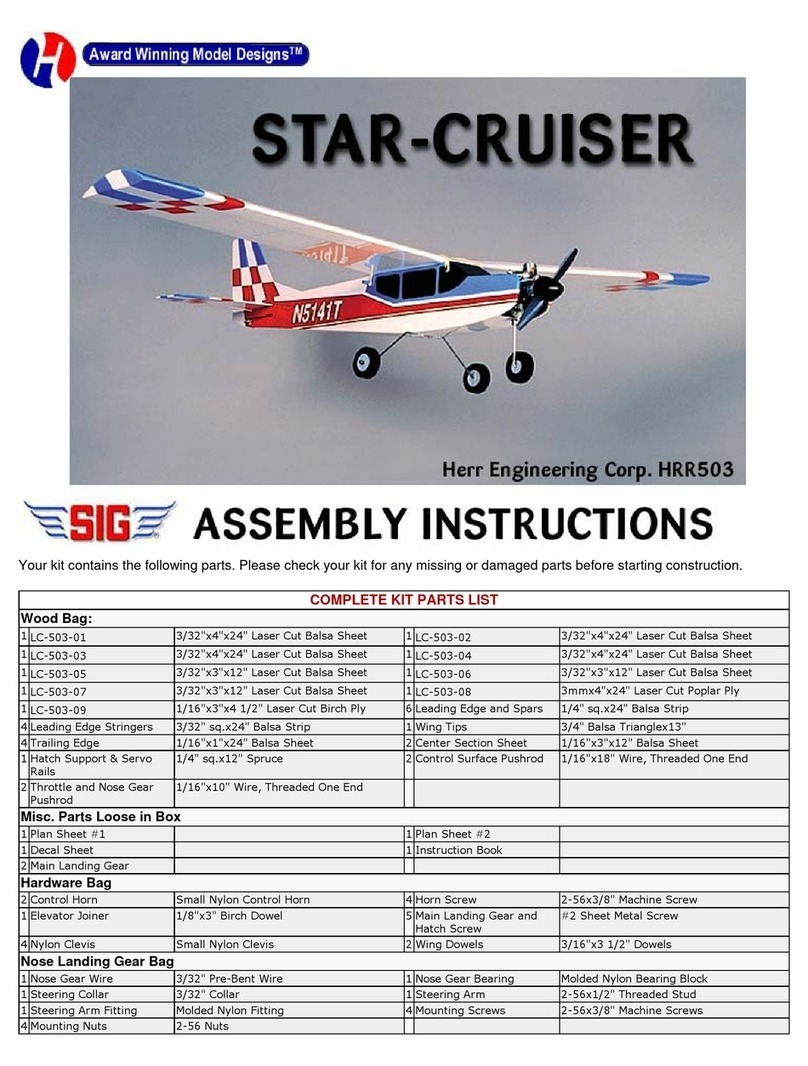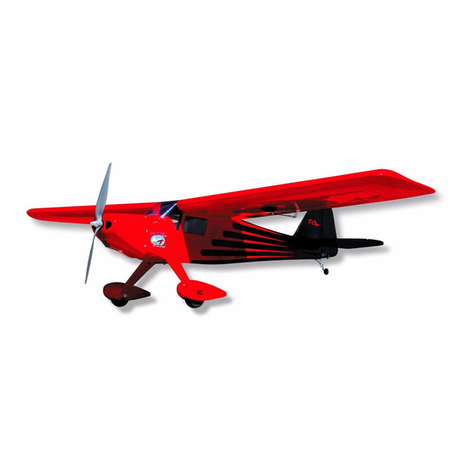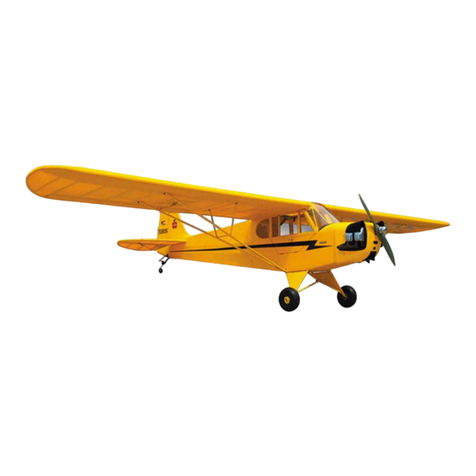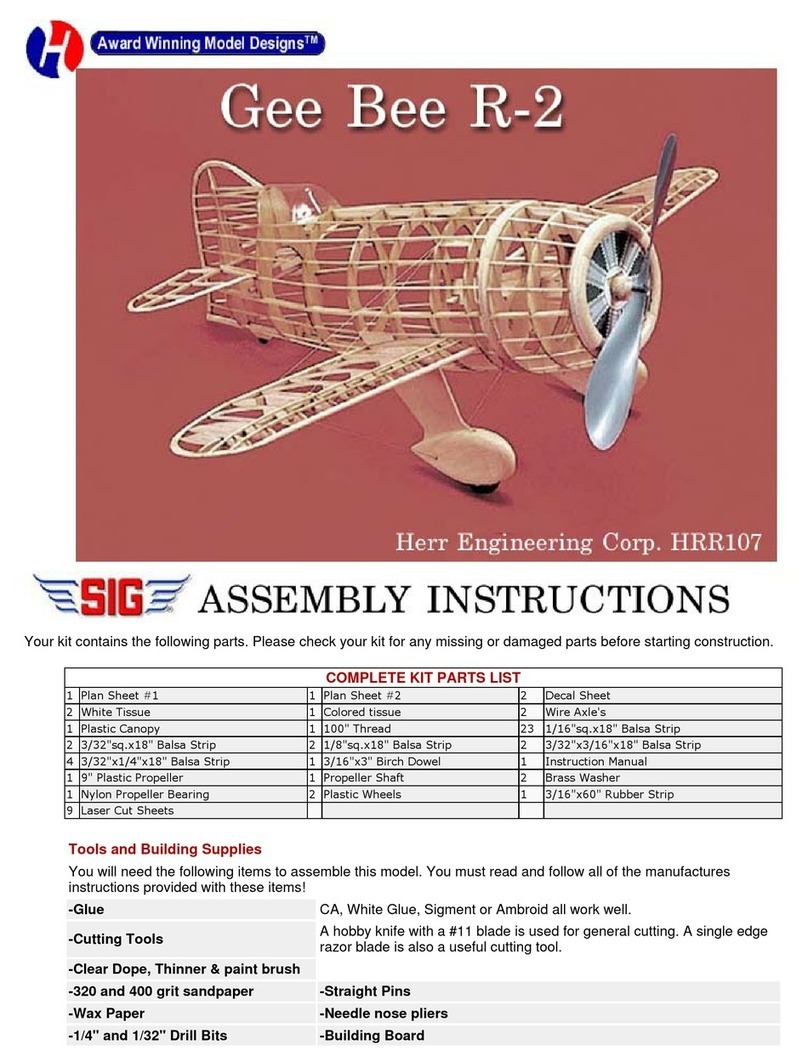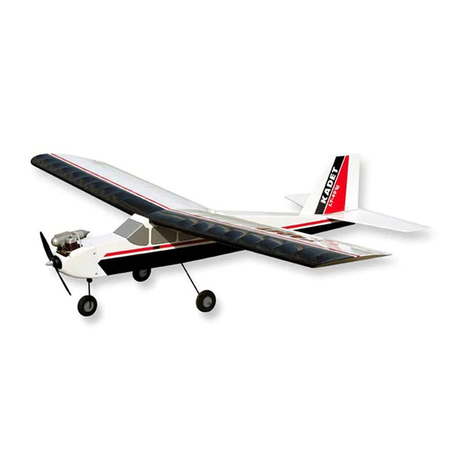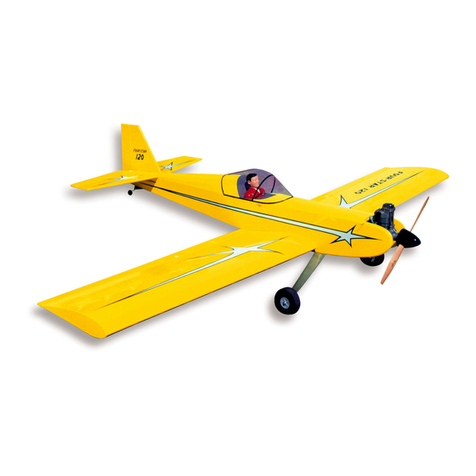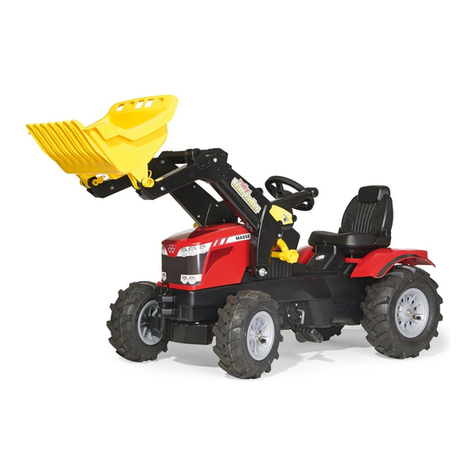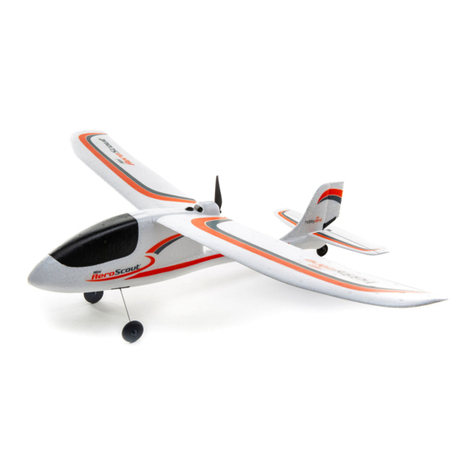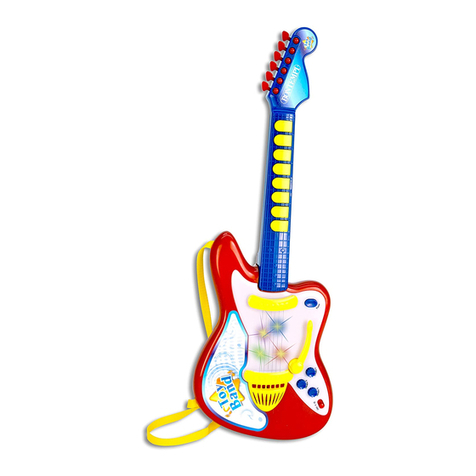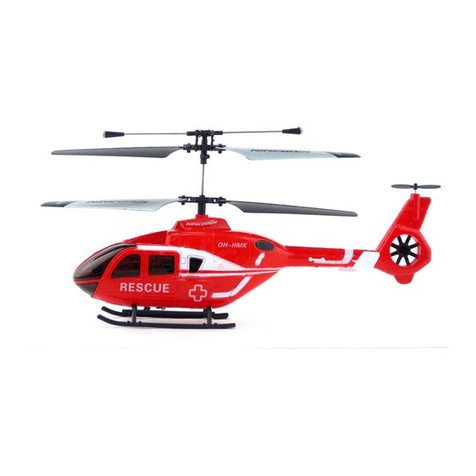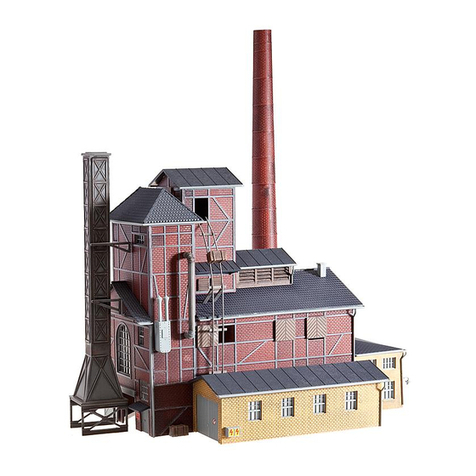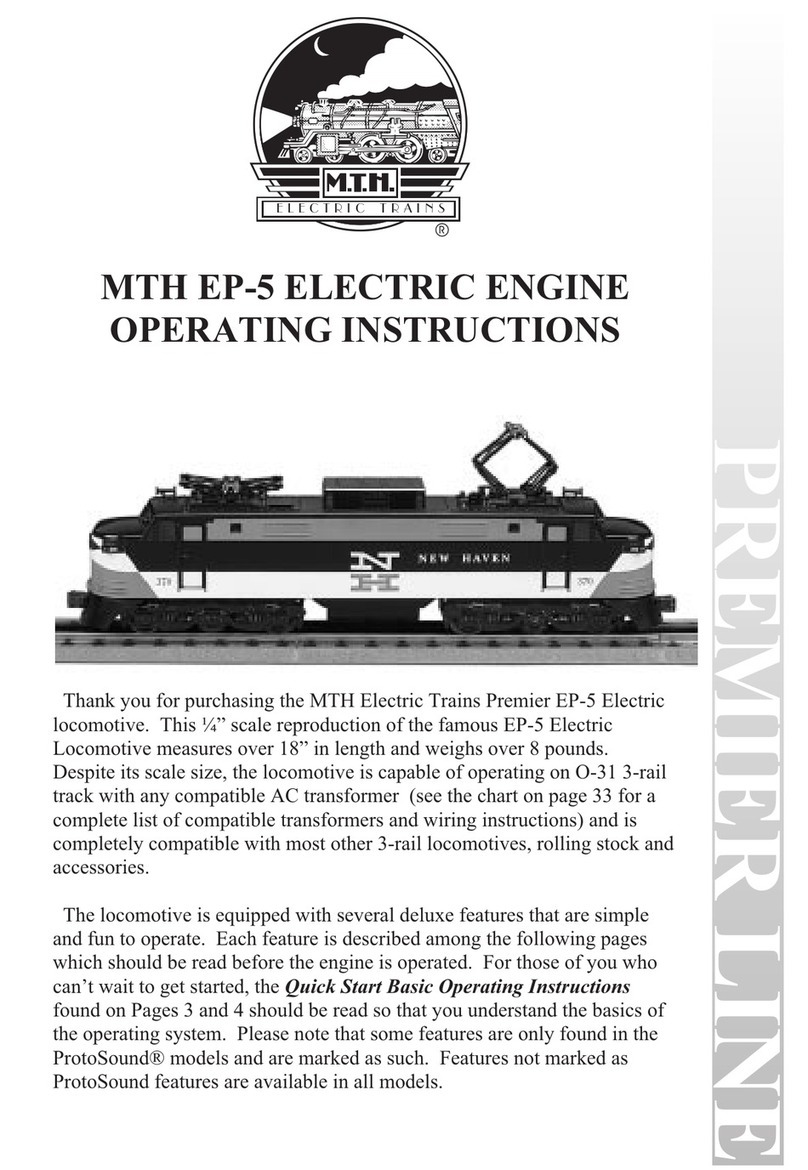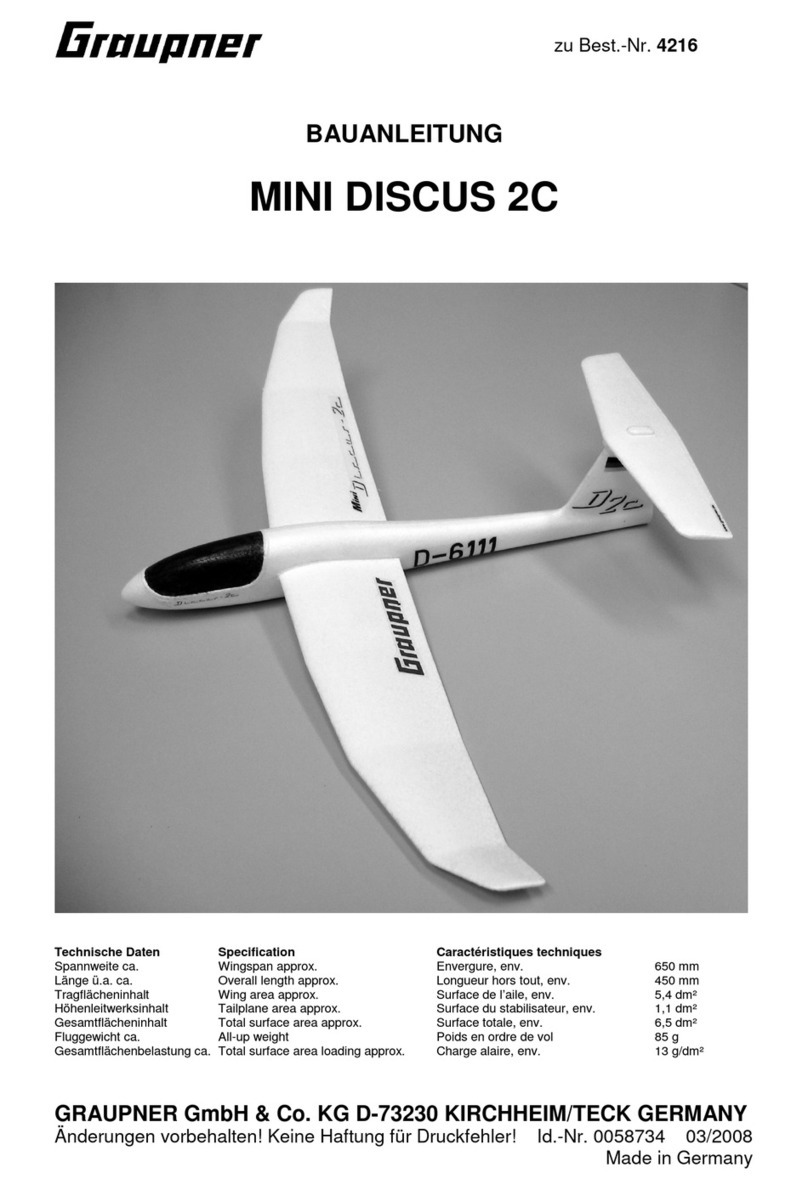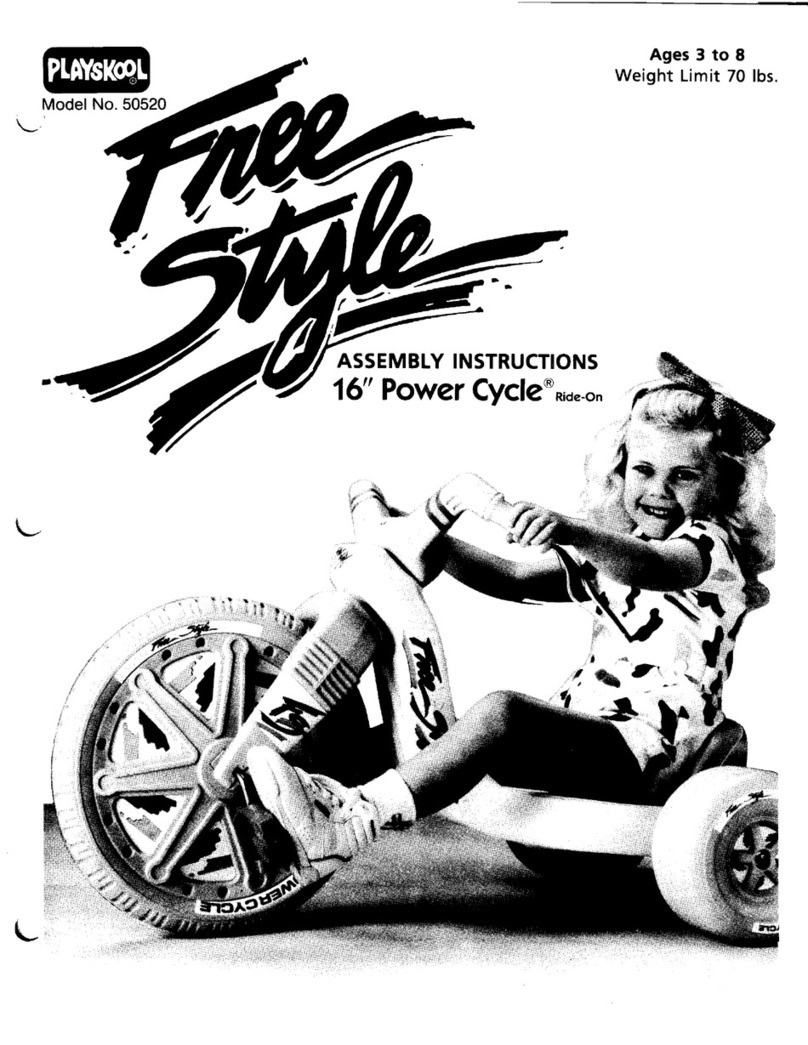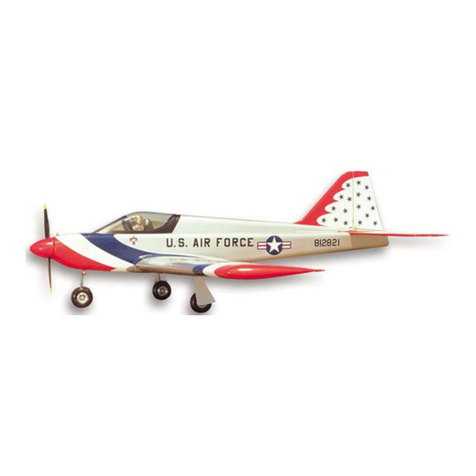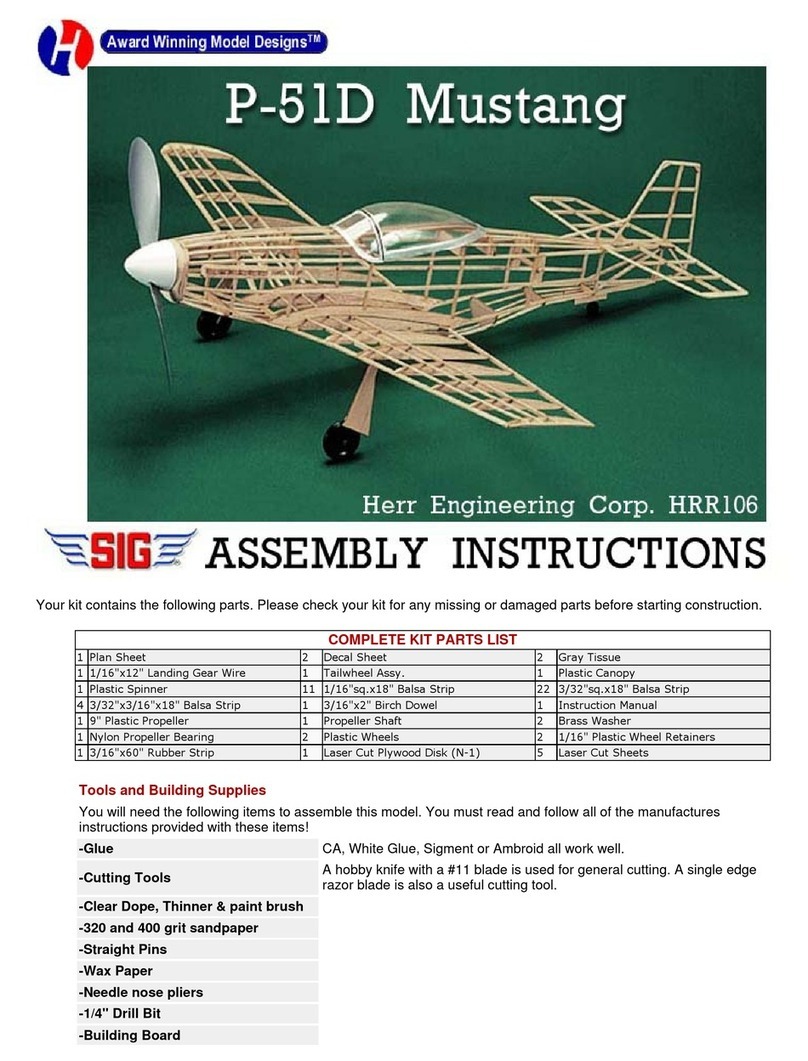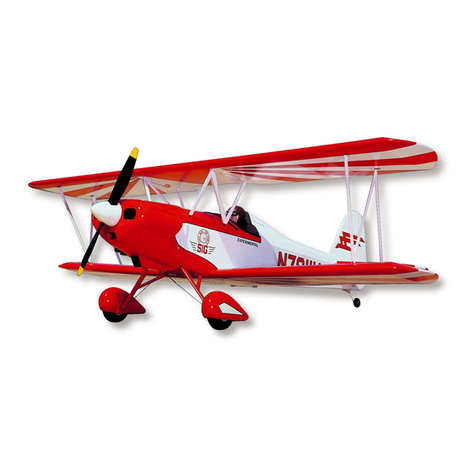120 ARF begins moving forward, back off of the up elevator input
and use the rudder as required to correct any engine torque and/or
wind induced deviations from a straight take-off run. At takeoff
speed, use a slight amount of up elevator to lift off, using ailerons
to keep the wings level. Climb to a reasonable altitude before
making any trim changes.
Although not intended as a primary R/C trainer, the FOUR-STAR
120 ARF is a very forgiving design that allows you to fly at relatively
low speeds. With the control movements set at the measurements
provided in this manual, the airplane should exhibit smooth,
predictable control. Try a few loops and rolls. Inverted flight is
easy, requiring a little down elevator for level flight. The FOUR-
STAR 120 ARF also performs nice inside and outside loops, snap
rolls, Immelmanns, stall turns, Cuban eights, and spins. Of course,
it is not a pattern aircraft, but with practice, there isn’t much that it
won’t do. As with any aircraft, getting consistently good results is
usually just a matter of practice.
Still at altitude, throttle the engine back to idle. This will give you a
good idea of the glide characteristics. While still at idle, steadily
increase up elevator input to get a feel for the stall characteristics.
The FOUR-STAR 120 ARF tends to stall very gently, with the nose
dropping straight ahead with little tendency to drop a wing. This is
great information to have when setting up your first landings.
Landing the FOUR-STAR 120 ARF is typically a pleasure. We
suggest using a standard landing approach, beginning with a
throttled back downwind leg and base turn to the final approach
into the wind. During final approach, keep just a little power on the
engine until the airplane is over the end of the runway. In
crosswind conditions, a little rudder input will likely be needed to
keep the airplane lined up with the runway. The FOUR-STAR 120
ARF is best landed in the three-point position. As long as we’re on
the subject, no landing gear system is bulletproof. Your FOUR-
STAR 120 ARF has a great landing gear system that has proven to
be very tough on both grass and asphalt flying fields. However, it
can be ripped off during less than desirable landing approaches,
poor field conditions, failure to flare, and just plain "brain fade". If
this happens, simply epoxy the landing gear block back in place
and learn to be more careful the next time. After landing, always
remember to hold up elevator when taxiing, to keep the tail wheel
firmly to the ground.
We sincerely hope that your FOUR-STAR 120 ARF will provide you
with many, many enjoyable flights. We also hope that this has been
a pleasurable kit for you to assemble and fly. Please operate your
airplane in a safe, responsible manner with constant regard to
other flyers, spectators, and property.
trim tape or a non-permanent marker pen. As shown, we balanced
our Four-Star 120 ARF models upside down, using a simple
padded C.G. fixture.
When balancing the model at the predetermined C.G.location, the
model must balance level. If the nose hangs down when
suspended at the proper C.G. location, it means that the model
nose-heavy. Likewise, if the tail hangs down, the model is
tail-heavy. If either of these conditions exists with your model, it
must be corrected.
In the case of a nose-heavy model, the correction to make it
balance level is fairly easy. The heaviest component in the model
is typically the battery pack and this can be repositioned a further
back in the model as needed to achieve the correct balance. In the
case of a tail-heavy model, weight has to be brought forward in the
fuselage to achieve the proper balance. There are several ways to
do this but the easiest is to move the battery pack as far forward in
the nose of the model to achieve the correct C.G. point. In the
unlikely event that more weight is needed, you might consider
adding lead weight into the nose or using a "Heavy Hub", available
commercially from Harry Higley Products. In any case, it is
imperative that the correct C.G. location is established before you
fly the model.
FLYING:
If you have carefully followed the assembly instructions in this
manual, test flying your new FOUR-STAR 120 ARF should be a lot
of fun. When it comes to test flying a new model, we always advise
modelers to choose a calm day with little or no wind. These
conditions allow you to better evaluate and more accurately adjust
the trim requirements for your airplane. As we’ve mentioned
before, a good running, reliable engine is a must for the ultimate
success of your airplane. Take the time to solve any engine
problems before you try to fly.
Always make it a part of your pre-flight routine to check each
control on the airplane, making sure the surfaces are moving in the
correct directions. Also check each control linkage to be sure they
are secure and that nothing is loose. With all the controls checked,
make a range check with your radio system, using the procedures
provided by your radio system manufacturer.
After starting and warming up the engine, hold full-up elevator (to
keep the tail wheel firmly on the ground) and taxi the FOUR-STAR
120 ARF out to the take-off position on your flying field. Line up the
airplane facing into the wind and along the centerline of the
runway. Hold a little up elevator and smoothly advance the throttle
- do not slam the throttle full open all at once. As the Four-Star
18




















